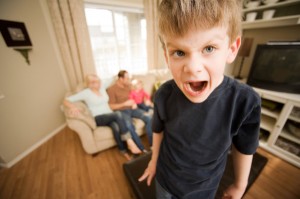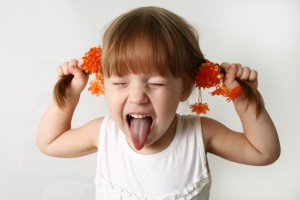ADHD : What you Need to Know
What is attention deficit hyperactivity disorder? 
Attention deficit hyperactivity disorder (ADHD) is a condition that makes it hard for a child to control his activity level and reactions to what’s going on around him. A child with ADHD also has trouble keeping his attention on what he wants to do. The condition emerges in early childhood and often lasts through adolescence and adulthood.
Most experts say it’s difficult, if not impossible, to diagnose ADHD in children under 4. That’s partly because symptoms like restlessness are hard to distinguish from very common energetic toddler and preschooler behavior, and partly because kids this age are still rapidly developing and changing. Still, ADHD symptoms do show up early, so some parents may start to notice them when their children are quite young.
They can vary depending on the child. Experts have identified three main types of ADHD: inattentive ADHD (previously called ADD), hyperactive-impulsive ADHD, and combined ADHD, which means a child has both inattentive and hyperactive symptoms.
When diagnosing ADHD, a doctor assesses whether a child has often behaved in some of the following ways, in more than one setting, for a period of longer than six months. The behavior also has to be negatively affecting the child’s life – at home, at school, and in social situations:
Signs of inattention:
- Daydreams, has a hard time paying attention
- Has trouble listening to what’s being said to her
- Is easily distracted from tasks and play
- Doesn’t follow through on obeying instructions
- Is disorganized
- Loses important things
- Forgets things
- Doesn’t want to do things that require ongoing mental effort
- Has trouble understanding information quickly and accurately
Signs of hyperactivity:
- Often fidgets or squirms, seems to be in constant motion
- Talks too much
- Has trouble playing quietly
- Often runs about or climbs in situations where it’s inappropriate
Signs of impulsivity:
- Blurts out inappropriate comments or answers before the entire question has been asked
- Can’t wait for things
- Has trouble taking turns or standing in line
- Acts without thinking
- Can’t control emotions
- Interrupts others
If you’re the parent of a preschooler, these sorts of behaviors probably sound familiar – almost all kids get overexcited or spacey once in a while. But if you think your preschooler is that way a lot – more so than other kids her age – and you’re worried it might be causing her problems, talk to her doctor.
How common is ADHD?
According to the American Academy of Pediatrics (AAP), the condition affects 4 to 12 percent of U.S. schoolchildren. Symptoms usually appear before age 7. Studies show that ADHD affects almost three times as many boys as girls, and there’s often a family history of the condition.
What causes ADHD?
This is the subject of an enormous amount of research, and there’s still plenty we don’t know. Researchers say ADHD is largely genetic: Some studies show that if one child has ADHD, the chances of a sibling having it are 20 to 25 percent, or five times as high as someone in the general population.
Other research shows that ADHD children with a particular gene variation have thinner tissue in the area of the brain that’s associated with attention. However, the difference in brain tissue isn’t permanent and as children with the gene grow up, the tissue thickens and their ADHD symptoms improve.
There may be a neurological aspect, too: People with ADHD are thought to have inherited a physical inability to regulate levels of brain chemicals like dopamine and norepinephrine. And research shows that children with ADHD have 3 to 4 percent less volume in all areas of the brain than children without ADHD. They also have less white matter – the fibers that make connections between areas of the brain.
Still, experts don’t know if these differences are directly related to ADHD or simply a variation of what’s normal.
For a time, researchers theorized that attention disorders were caused by minor head injuries or damage to the brain. In fact, for many years ADHD was called “minimal brain damage” or “minimal brain dysfunction.” But while people with severe brain injury often have ADHD-like symptoms, the vast majority of people with ADHD have no history of head injury or brain damage.
Research has found that preservatives and artificial coloring in food increases hyperactivity in children. Cigarette and alcohol use during the mother’s pregnancy may also be contributing factors.
But contrary to what you may have heard, the most recent studies don’t show any link between ADHD and refined sugar or immunizations. And ADHD is not caused by poor parenting, family problems, bad teachers or schools, or too much TV. Environment can influence the severity of the condition and how well a child copes and functions with it, but it’s not a cause.
Will my child outgrow it?
Probably not – ADHD usually continues into adulthood. Eighty percent of the children who take medication for ADHD in childhood still need it as teens, and over half of them also rely on it in adulthood. Many learn to manage the disorder, though, and their symptoms improve.
How will my child be evaluated?
Your child’s doctor will examine him and review his medical and social history. She may ask you about your pregnancy, other family members who have been diagnosed with ADHD, and any emotional difficulties your preschooler has gone through. She may also order tests to rule out vision and hearing problems.
The doctor could refer you to a child psychologist or psychiatrist, a developmental pediatrician, or another mental health professional, who will probably give your child various tests to evaluate such things as his memory and his problem-solving and listening skills. This practitioner will ask you or your child’s daycare provider to fill out a form that asks questions like, “How often does the child seem to be restless?” with possible responses ranging from “never” to “always.”
The expert will also look for the behaviors associated with ADHD. She may ask your child’s daycare provider to write a letter describing his typical behavior because even a child who runs in circles much of the time may act calmer or more focused during a doctor visit. Together the doctor and other practitioners can make a diagnosis.
What is the treatment?
There are three options: family therapy, behavioral therapy, and medication. Most medical experts feel that family and behavioral therapy are enough to treat ADHD in preschoolers.
Family therapy, sometimes called parent training, is one of the best ways to deal with ADHD. It will help you learn how to handle your own frustration with your child’s behavior, how to parent consistently and positively, and how to adjust your expectations.
Behavioral therapy can teach you how to structure situations at home and school so your child doesn’t become unnecessarily stimulated or distracted. It might also help your child develop coping strategies for particular situations and with transitions from one activity to the next.
ADHD medications aren’t recommended by drug manufacturers for kids under 6, though new research shows drug treatment can help children as young as 4. The drugs most often prescribed are stimulants, including methylphenidate (Ritalin) and dextroamphetamine (Dexedrine). Researchers believe these medicines help regulate levels of neurotransmitters in the brain. These medications come in short-acting, medium-acting, long-acting forms.
Keep in mind that ADHD is a relatively new term and has received a lot of media attention in recent years. Researchers are still trying to decide on the best ways to treat it, and as new studies are publicized, your friends and family may give you an earful about what you should do. The best way to resolve any confusion and anxiety you feel is to work closely with your child’s doctor and therapist, focusing on the solutions that seem best for your child.
What can I do at home to help my child?
The first step is to accept that your preschooler has a behavioral disorder and adjust your expectations for what she’s capable of right now. Many kids with ADHD are terrifically bright and creative – your child may well grow up to be an eminent scientist or film director. But you’ll need to rethink the way you parent her as well as the type of environment you establish for her.
Here’s where to begin:
Sign everybody up. If you do get a conclusive diagnosis, notify family members (at least those who spend a lot of time with your child), close friends, teachers, and anybody else who can offer support. Some parents of children with ADHD used to keep quiet for fear their child would be stigmatized, but it can be comforting and grounding to be able to give the behavior a name.
Teachers and coaches can better help your child if they know you’re available to work with them to make the classroom, field, or camp environment a success. And it’s important to build your support network so that your child gets all the help she needs in the months and years ahead.
Change the scene. Eliminate sources of overstimulation and distraction in your child’s environment. At home, make sure her room is tidy, stashing extra toys or books where they won’t catch her eye. At daycare, ask the teacher to place your child where she can keep an eye on her or move her away from kids and objects that tend to divert her attention.
Structure your day. All preschoolers do well with routines, but kids with ADHD need them even more. A regular schedule prevents the anxiety and tension of not knowing what’s going to happen next. You don’t have to be rigid – just make sure your child knows when and where she’ll have her meals, naps, baths, and so on.
Reward instead of punish. You’ve probably already discovered how useless it is to try to punish your child when she’s running around or tuning you out. But you may not know how well kids with ADHD respond to simple rewards. Praise good behavior immediately (“You brushed your teeth, just like I asked you to! Thanks so much!”), and give your child some little token that pleases her – a gold star, a funny rubber stamp, or an extra bedtime story. The reward should be something she can enjoy right away because kids with ADHD don’t like to wait.
Getting a tangible show of appreciation will make your child feel good, and she’ll be inclined to repeat the behavior that made her feel that way. Over time, the good feeling will start to come from inside and there will be less need to provide those external rewards.









